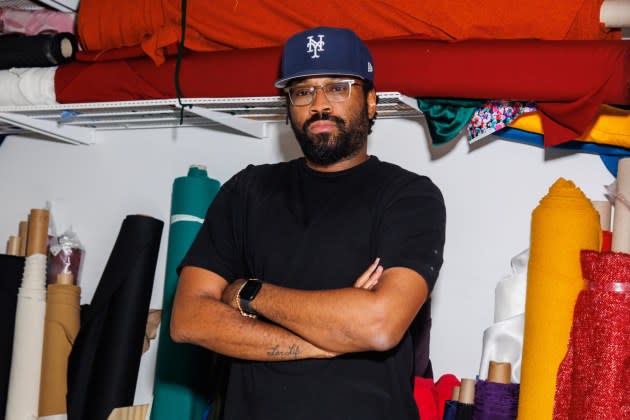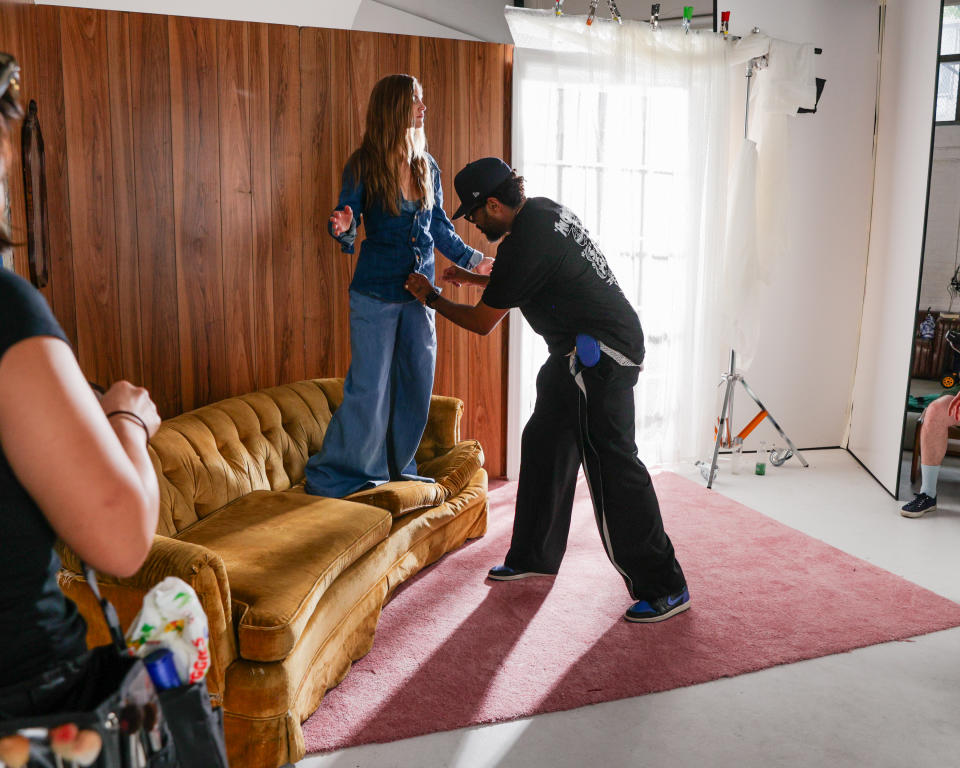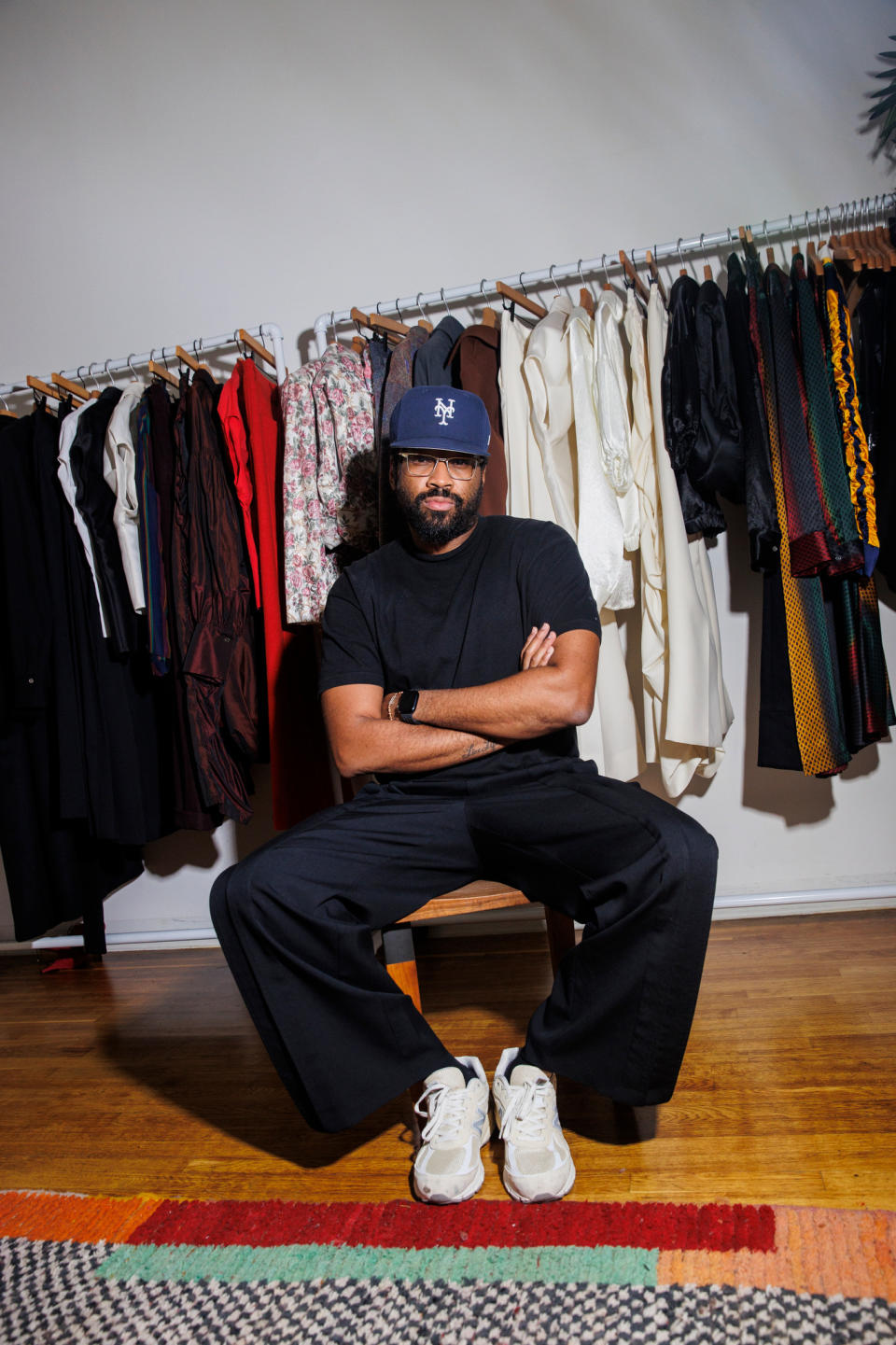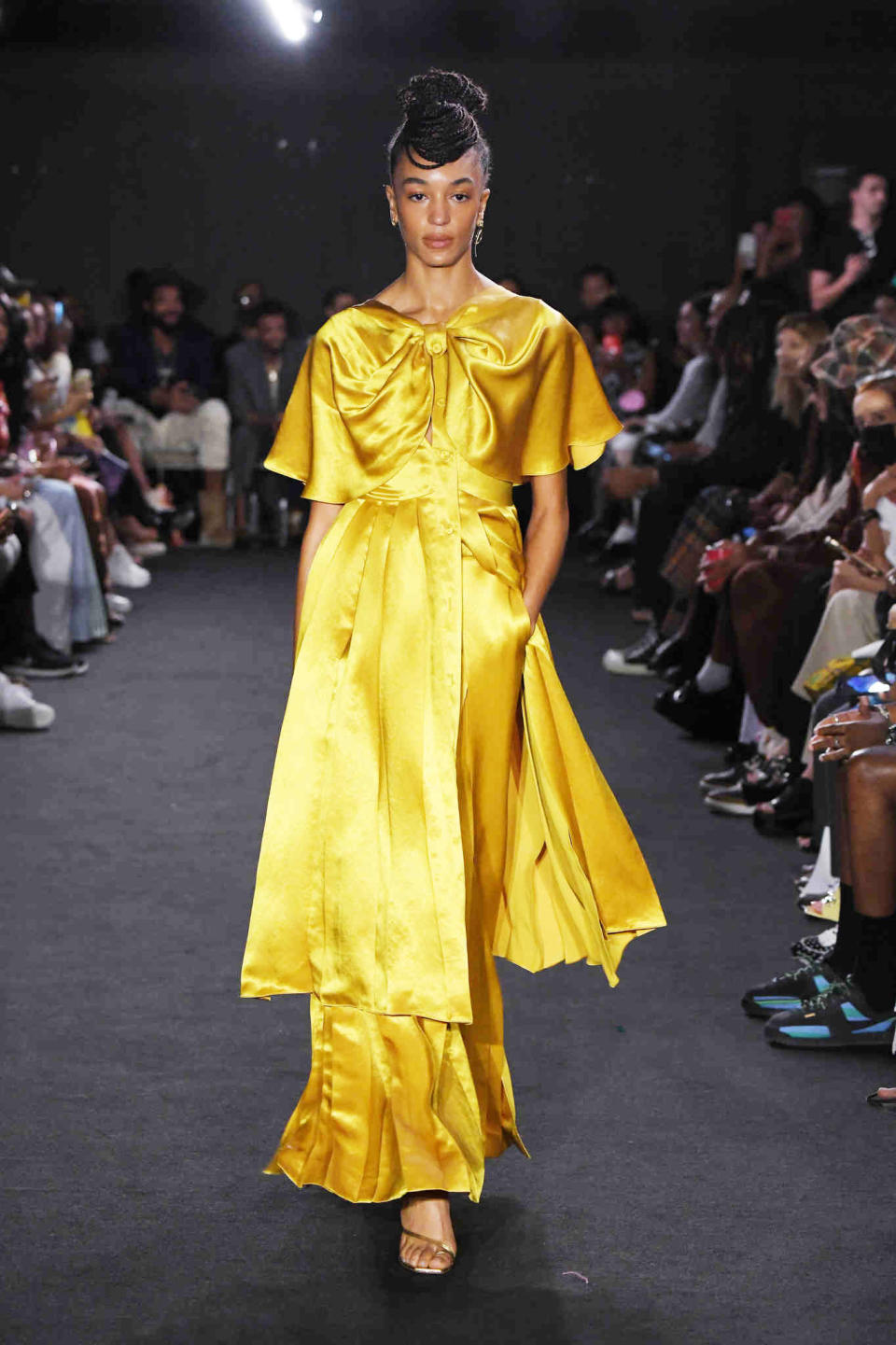Maxwell Osborne on the Constant Discovery of Growing AnOnlyChild

“The AnOnlyChild story is not a comeback story because it’s actually just a new story,” Maxwell Osborne said during a recent afternoon visit to his Midtown showroom.
The designer, who continually has his eye on the pulse, has spent about 20 years in the fashion industry. For his latest label, Osborne has been taking his learnings from his roles as Public School cofounder and former DKNY codesigner, both alongside Dao Yi-Chow, and using them to fuel his solo act’s new era.
More from WWD
EXCLUSIVE: Kendall Jenner Makes Her Stella McCartney Debut in Horse-inspired Campaign
Eva Chen Launches Sustainable Kids' Clothing Line With H&M Just in Time for Back-to-school Season
While Public School, DKNY and now AnOnlyChild share a DNA stemming from the designer’s love for and experience from growing up in New York, Osborne said the latter “is separate from that, but there’s still parts you’ll catch.”
“I still grew up here in New York, so you’re going to have life experiences with that. It’s also part of this idea of coming from nothing, even more so than ever, because I tried to think about what my mother and our family — my aunts and my uncles — went through and how that plays into now,” Osborne said.
But AnOnly Child reaches beyond his New York roots to his ones in Jamaica, as seen through his initial collection, which first debuted direct-to-consumer before exclusively launching at Saks Fifth Avenue last January.

“This brand and the concept was born during COVID-19, when there wasn’t much to do. You had to dig inside, really play around and experiment with things and see what brings you joy. So separate from the other brands of knowing exactly what the concept is and knowing exactly what you want to do, this brand is separate,” he said.
Unlike his previous ventures, AnOnlyChild’s guiding principle is textile play; each silhouette is dictated by deadstock and reclaimed materials.
“What’s different about this brand from DKNY or Public School is that the fabric speaks first. There’s never been a time in my life that we’ve got fabric and thought, ‘OK, what do we do with this? How do you make something out of this? How do you make something that you would want to wear, you’d want to dress somebody in it or you want to see somebody in it even?'” he said.
“When I talk about my family, it’s about the past into the present, and when you think about textiles and what the fabric is, nothing’s new. So it’s the past and we’re making it new again. There’s a lot of little nuances that we love. There’s a point of view when it comes to it.”
The name AnOnlyChild directly plays into this idea. “How do you entertain yourself, by yourself? You have to make an invisible friend,” said Osborne.
At the beginning stages, Osborne said he used cutting room floor samples, fabrications from friends and old Public School materials. Today, the brand’s team of three (including designer Kristy Chen) sources from Italy, Japan and Los Angeles while continuing all manufacturing in the United States. Currently, the brand homes in on mostly women’s and unisex styles, as well as key men’s pieces, which Osborne is looking to expand in the future.
While the use of deadstock, vintage and recycled fabrications isn’t a new concept, and is one that’s certainly gained wider traction in the market, Osborne’s eye and knack for true sportswear has given his emerging luxury label a distinct point of view.
“Deadstock is intriguing and exciting for a lot of brands, one, because I guess the loaded word of sustainability, but for us, it’s more of the creativity. If your back is against the wall, which is a metaphor that I like to live with, what are you going to do and how are you going to make it out of it? Yes, we could just call up a mill and buy all of the beautiful fabrics we would love to make — I’m not saying it’s easier, it’s definitely not, but it’s a different way of thinking. You find yourself forced to use some of these fabrics that you end up loving and that’s just fun.
“It started as making fabrics — taking things and making them our own,” he said of his intricate needlepunch styles, which incorporate the ancient Egyptian technique of binding different fabrications together to create a new material.
Pointing to the inside of the needlepunch pant’s bold silk floral lining, Osborne said, “Things like this — this is not a fabric you’re ever going to wear or choose, but when you felt it, you get hints of colors and see the pattern peek through. It takes so long to make this fabric, which is the fun part, but it’s all experimental.”
The approach is one that enables Osborne’s designs to have an individualist feel and inherent exclusivity, which the designer said has both its advantages and challenges that he’s certainly up for.
Osborne said he envisions the AnOnlyChild customer as “like-minded individuals who grew up in major cities but also, if you attend galleries pretty often, you’re going to like the fabric and be drawn to it. Some of the silhouettes are not super crazy or super designed in that way because, like, the fabric is. The fabric takes time, the fabric is thoughtful. It’s meticulous in that way. That’s the part that keeps us going and keeps us excited.”

Like Osborne, these customers are enticed by the brand’s ideals of luxury: exclusivity, uniqueness (much like the covetable quiet luxury trend, the line currently doesn’t boast logos) and quality craftsmanship. As an emerging label, Osborne said the challenge is being able to attract new customers to his luxury-priced range (currently ranging from $440 to $2,400) by finding aesthetic ways to teach them about the line’s fabrications and processes.
Expanding from direct-to-consumer to a wider, but still limited, wholesale business (now including Saks Fifth Avenue, Bergdorf Goodman, Kith and Elyse Walker); creating consistent look books (which have all referenced an at-home vibe), and holding a community-based event in Brooklyn this summer all play into the brand’s creative storytelling approach. In the future, this could mean holding trunk shows, expanding into pre-collections and growing his team (Osborne is currently seeking investment to grow and scale the small brand).
The designer also showed during last year’s L.A. Fashion Week; there’s a potential plan to show again this September via an experiential activation.
Stemming from his July “Summer Studio Session” in Brooklyn, which featured a live photoshoot of his new men’s and women’s deadstock denim program alongside multibrand pop–up shops and an outdoor cookout, the idea would be to give the audience a community-based, inclusive experience.
Launching the new deadstock denim program (set to release later this fall) was also a way for Osborne to reach new customers with his same individualistic approach (each style is hand washed and dyed locally in Brooklyn, making them one-of-one), at a lower price point than his mainline collections ($280 to $800). It’s also a way to approach the challenges of scalability, as deadstock denim is more widely accessible.
From reworked denim to his signature double-pleat deadstock wool Antonio pant, Osborne said the key to scalability is the ability to “plug and play,” with existing fabrication and fairly similar substitutes.
Having found previous success with Public School (which he claimed was “100 percent a surprise”), the designer added, “Knowing that we’ve lived there and I’ve done it, it’s very hard not to think of success when you start another brand. Before, we didn’t have that, we didn’t have an award or weren’t in super major stores having conversations. So when you’ve walked that path, you can’t not walk that path and try to go past that and make it better, because you know you can learn from your mistakes and grow in a stronger way… if they’re even mistakes, which I don’t think so, because you live for learnings.”
The proof of success is in the pudding of Osborne’s designs, and while the designer isn’t chasing commercial fame by any means — rather putting his head down, doing the work and pushing forward — it is likely to steadily come.

Day by day, Osborne said he’s continually learning and excited by the aspect of “starting backwards,” slowly planning new collections (the brand is currently shipping its second) and growing the brand with a sense of discovery. Whether whipping up a limited quantity capsule or an exclusive style crafted for a retail partner, he welcomes the challenge of limited quantities and views it as a way to give each fabric’s previous life a new chapter, as seen through his instinctual, thoughtful and covetable luxury garb.
“AnOnlyChild started and I thought, ‘Let’s keep going.’ It wasn’t much of a plan; [it was] the same with Public School. When we started Public School, there wasn’t a runway and it wasn’t, ‘Here’s your plan or what your run-rate is for the next three years.”‘ No, we locked ourselves in a room and just did it. I told myself I’ll never do that again, and then here we are. Sometimes you just have to do it. Win, lose or whatever — you just know you have to get it out of your head, you have to move on and live in that excitement and live in that moment.”
Best of WWD

